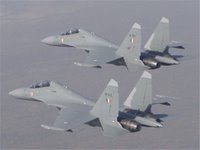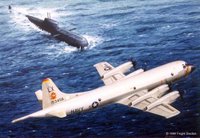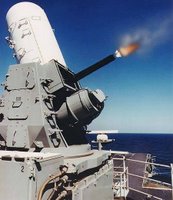On December 8, the 2005 meeting of the Organisation of Islamic Conference came to an end. The purpose of the summit was purportedly to reject extremism, condemn terrorism, extol the virtues of tolerance and stress the importance of the protection of human rights. Frankly, I find this laughable. Let us see why I find the OIC to be such a big joke:
First, let us start with the name of the organisation itself. Organisation of Islamic Conference? What the hell does that mean? Organisation of Islamic Countries, I can understand, but this? It either makes no sense, or my English sucks, although I have a sneaking suspicion that it is the former.
Then, there is the venue – the city of Makkah in Saudi Arabia. As we all know, Makkah is the holiest Muslim city, and non-Muslims are not allowed to enter it. Also, Saudi Arabia itself is the hallmark of intolerance in today’s world. If a man is caught practising a religion other than Islam in Saudi Arabia, he faces certain death. I find it ironic that the organisation that held a summit in a country where there is no religious freedom, and in a city non-Muslims are not allowed to enter, preached tolerance to the world.
Third, the member countries themselves aren’t exactly role models to be followed when it comes to human rights, tolerance, and condemning extremism and terrorism. Here are some of the leading lights:
- The Islamic Republic of Pakistan: Also referred to as the Terrorist State of Pakistan (TSP), this country started off by committing genocide in East Pakistan (now known as Bangladesh) in 1971, where the murderous General Tikka Khan massacred anywhere between 1 and 3 million Banglas. It actively sponsors terrorism in Kashmir (terrorists were “freedom fighters” until 9/11 made it almost impossible to call them that any longer), while it is vigorously settling Punjabis inside PoK. Minorities (Shias, Christians, Hindus, etc.) are not safe in Pakistan as has been proved by the anti-Shia riots, and persecution of Christians.
- The Kingdom of Saudi Arabia: Despite the veneer of civilisation it displays, Saudi Arabia is probably the most barbaric country in the world. Their laws are positively medieval, relying on a very strict interpretation of the Shariah; as are the methods used to implement them. Punishments like amputation of limbs for stealing, and flogging for “lesser crimes” are common. Here is a must-read report by Amnesty International on the human rights situation in Saudi Arabia. Recently, a Shariah court has ruled that one eye of an Indian salesman from Kerala be gouged out and donated to a Saudi national. The reason? He got into an altercation with a local resident, who lost an eye in the fight - an eye which was already damaged, according to him. Women, of course, have no rights at all. They have to cover their bodies with the Burkha, they cannot drive cars, or even socialise with men. If these “laws” are broken, the punishment may be death. I was amazed to see Saudi Arabia speaking about human rights at the OIC summit.
- The Islamic State of Afghanistan: It used to be the most barbaric country in the world under the Taliban rule. It was a member of the OIC even then. Need I say more?
- The Republic of Iraq: Saddam Hussein's Iraq set world standards in torture. Saddam and his sons lived a lavish life in their grand palaces, while the rest of the country starved. Kurds were gassed and mercilessly murdered, so were the Shias who dared to rise against Saddam.
- Palestine: It is not even an independent country, but enjoys membership of the OIC. It's most respected leader, Yasser Arafat, was a terrorist himself until he saw that terrorism against the Israelis wasn't exactly producing desired results. He was the leader of the “Fatah” faction of the Palestine Liberation Organisation (PLO), which recruited terrorists for raids inside Israel. Among the offshoots of Fatah was the infamous “Black September” who murdered Israeli athletes at the 1972 Munich Olympics. Also, Hamas, which enjoys a lot of support from the Palestinian people, specialises in suicide bombings in Israel, which have killed many innocent Israeli civilians.
- Malaysia: A decent country overall, but this remark by ex-Prime Minister Mahathir Mohammed showed how “moderate” he was.
It is no wonder that the OIC has lost all relevance today has become the laughing stock of the world.












